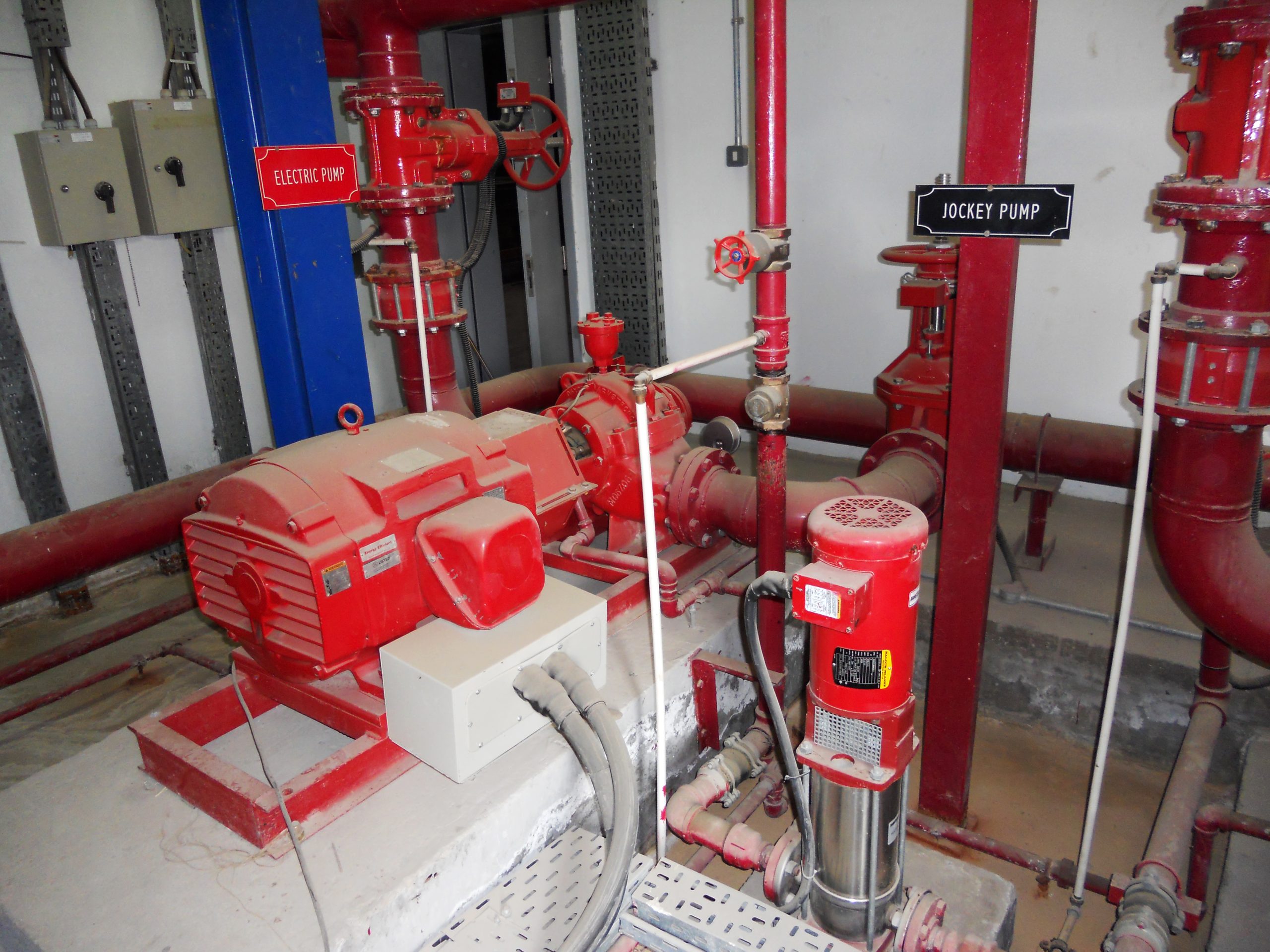The fire water pump is a critical component of most water-based fire protection systems. Its job is to boost the pressure of a building’s water supply
The fire water pump is a critical component of most water-based fire protection systems. Its job is to boost the pressure of a building’s water supply.
UL and FM require that fire pumps be tested at churn (no flow), no-flow, and at 150% of the fire pump’s rated flow. It is important to have enough test hoses and flow measuring devices on hand for this testing.
Power
Fire water pumps require high horsepower and flow to meet code requirements. The power consumption varies and is specified by the sizing standards of various codes such as NFPA 5000: Building Construction and Safety Code, NFPA 101: Life Safety Code, NFPA 20: Standard for Installation of Stationary Pumps for Fire Protection, and National Electric Code (NEC).
The NEC requires that the power source for the fire pump be separate from the normal side of the electrical service breaker. This is done to prevent a fire at the service from knocking out the fire pump. This is why most installations utilize an integrated transfer switch with the fire pump controller in a cabinet or enclosure that is separate from the main electrical service equipment.
The fire pump power sizing is accomplished by looking at the pump curve on the factory-certified test report and identifying the point when the driver peaks and begins to fall. This ensures that the driver has been properly sized to meet UL and FM requirements.
Design
Fire water pumps are designed to handle the most demanding systems. In a typical building like a high-rise office tower, this means the sprinkler demand and the standpipe system. It also can mean foam systems for fuel oil storage and helipads on the roof — or any of a number of other systems that must be supplied with adequate pressure and flow at the time of a fire.
This demanding performance requires the pump to have low NPSH curves (the head generated at a given flow) to avoid cavitation and allow for continuous decreases in head with increasing flow. It also requires that the pump be able to maintain a constant pressure over its full load range.
To ensure that this is possible, the design of the impeller requires it to be flame plated with tungsten carbide. This process creates a hard, well-bonded wear surface that outwears hard chrome plating and even tool steel. This enables the pump to deliver its required power without any loss of efficiency and flow.
Components
A fire water pump is an important component of both fixed-place sprinkler systems and fire trucks and serves the same purpose – boosting pressure for hose operations. They are typically powered by electric motors, diesel engines or, in some cases, steam turbines.
The heart of the fire pump consists of an impeller shaft assembly that grabs water from the eye and pumps it out through the exitway. This assembly must be designed for optimum efficiency and longevity.
The shrouds are the walls that surround the impeller, and they control and direct the water as it leaves the eye. These shrouds also include a stripping edge that removes the water from the exitway, so it doesn’t want to return to the eye.
Most facilities will need multiple fire water pumps, including spares. Ideally, they will be located in different locations so that the same fire can’t knock out both of them. All of the pumps should be equipped with a power switch to ensure that they are in the “on” position during normal operation.
Maintenance
In order to keep a fire pump in good working condition, it must be properly inspected and tested. Inspections are visual examinations to determine if everything is in place and undamaged, while tests put the system through its paces to find out if it will perform as intended in an emergency.
Testing should include no-flow (dry) testing, weekly for electric pumps and monthly for diesel-powered ones, to ensure that the system will start up and operate without water. It’s also important to test the controller, alarms and indicators, and the battery for backup power.
Many people choose to use a professional that specializes in fire pump testing and maintenance rather than in-house staff members to conduct the annual flow test. This allows for the expert to look for issues like water standing on the floor of the fire pump room – a significant slip, trip and fall hazard that could result in a costly worker’s compensation claim.

COMMENTS